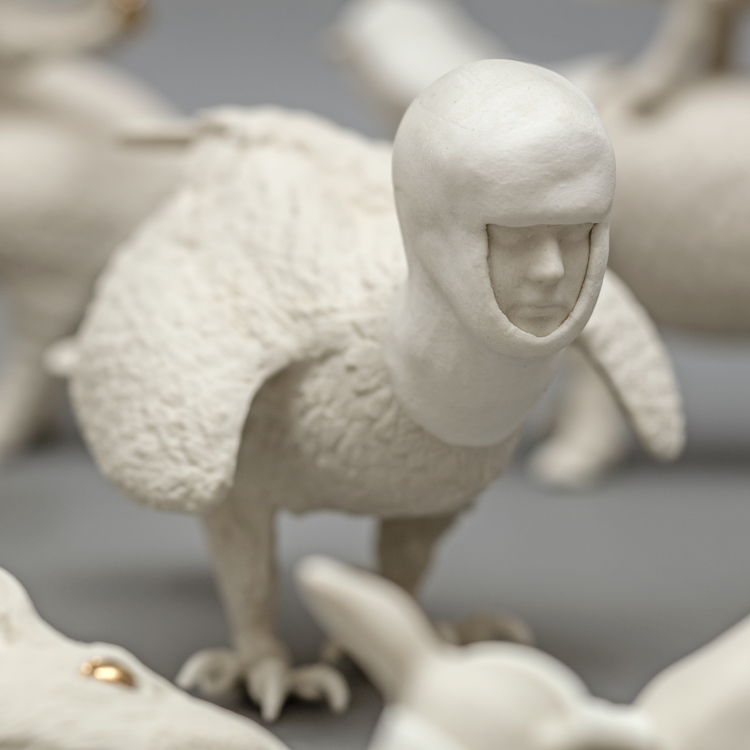TORONTO — Canadian ceramist Janet Macpherson’s latest exhibition Janet Macpherson: A Canadian Bestiary at the Gardiner Museum (Toronto, February 16 – May 21, 2017) weaves a narrative of expansion, exploitation and the complexity of the human experience through a menagerie of bound and bandaged critters.
Some are curious, hybrid creatures, often diminutive in scale, wrapped, bandaged or masked. Others are full-sized and true to life. In Macpherson’s bestiary, animals stand in for the complexity of human experience.
Macpherson is widely acclaimed for her technically complex employment of porcelain slipcasting to create her uncannily realistic animal forms, with each offering a slight dose of malaise. The Star writes, Macpherson’s bestiary, commissioned as a Canada 150 project (150th Anniversary of Confederation), revisits moments in Canadian history questioning concepts of identity and relationship to land.
Macpherson reaches deep into the past, to the beginnings of our exploitive impulses: A shrine to St. Jean de Brebeuf, a colonial-era missionary charged with the “salvation” of indigenous people near her hometown of Midland, Ont., exposes its roots, represented by gilded sacramental hearts.

Click for larger image
A series of installations, including sound design and video projections, comprise the exhibition. Macpherson’s battered creatures peer out from behind a gilded-eye, two-faced owl decoy standing three high; they migrate across a narrow passageway as others act as scouts keeping watch nearby.

Click for larger image
Macpherson writes in her artist biography that her work draws upon her Catholic upbringing, specifically the complicated relationship between humans and their own physical bodies.
Through the use of animal forms I explore ideas of repression, confinement, and torture, the animals becoming a metaphor for our relationships with others, and how we understand ourselves.
Read more reflections by Cfile of Macpherson’s work.
Do you love or loathe this exhibition of contemporary ceramics and contemporary ceramic art? Let us know in the comments.
















The animals are beautifully made. I’m not sure I understand the wisdom of leaving on the mold lines. They become models or toys as opposed to relatable animals. I am more likely to dismiss them as objects. I find that a distancing effect.
And the repeated use of hoods or shawls loses it impact. Are we all that wounded? I hope to enjoy life a little more. I can put my wounds behind me and move on. It’s sad. That’s all.
This the most powerful and beautiful work I have seen in a long time – Noah’s “Arch” conveying the walking wounded – beautiful animals as the innocent victims of the environmental mess made by humans – a convincing message to the world. A very theatrical and dramatic installation. Brilliant!
This work is fascinating. I love how she incorporates just enough human parts to create a narrative of human experience with animal subjects, that’s as good of a use of slip-casting as any I’m aware of.
i am trying to construct a life-sized mallard duck using clay slabs. I am having problems forming the body. Your work is wonderful. I love it! Would you be willing to give me some pointers on getting the body right? I would be so grateful.